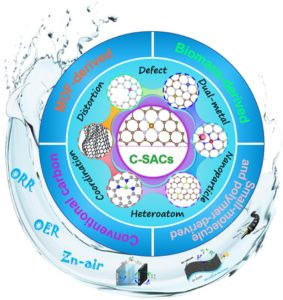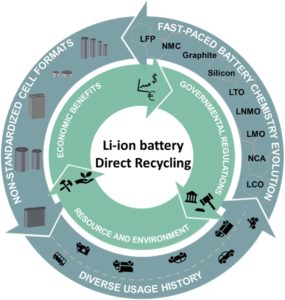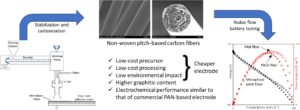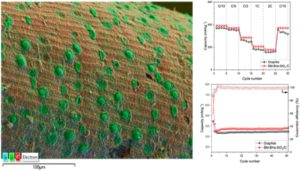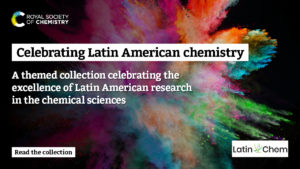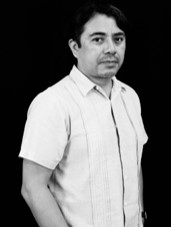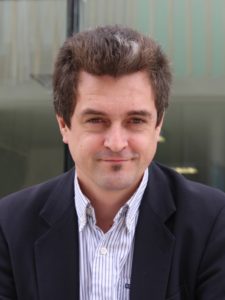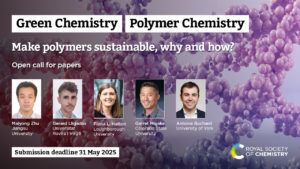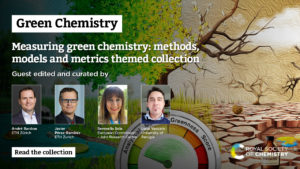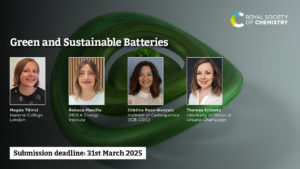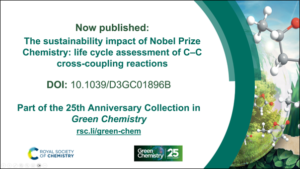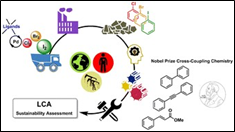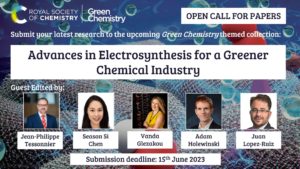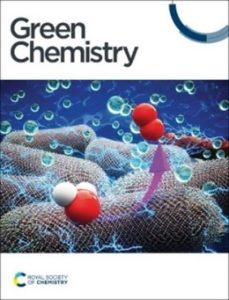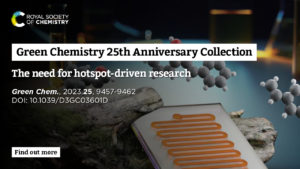
Over the past 25 years, Green Chemistry has provided a unique forum for the publication of innovative research on the development of alternative sustainable technologies, efficient utilisation of resources and the concomitant minimisation of waste. We are delighted to bring together as very special issue containing articles by members of the green chemistry community as well as past and present Green Chemistry Board members, to mark and celebrate our first 25 years.
 Among the contributions to this themed collection is a perspective article on the need for hotspot-driven research (DOI: 10.1039/D3GC03601D) co-authored by Philip Jessop (Green Chemistry’s former Chair) and Alex R. MacDonald. The authors define a hotspot as a chemical, process step, or life stage that causes more harm than the others (whether considering global warming, ecotoxicity, or resource consumption). For example, during the life cycle of beer, more global warming is caused by the manufacturing of the glass bottle than the agriculture, beer production, transport, and waste management steps combined. Thus, making the bottle is the global warming hotspot.
Among the contributions to this themed collection is a perspective article on the need for hotspot-driven research (DOI: 10.1039/D3GC03601D) co-authored by Philip Jessop (Green Chemistry’s former Chair) and Alex R. MacDonald. The authors define a hotspot as a chemical, process step, or life stage that causes more harm than the others (whether considering global warming, ecotoxicity, or resource consumption). For example, during the life cycle of beer, more global warming is caused by the manufacturing of the glass bottle than the agriculture, beer production, transport, and waste management steps combined. Thus, making the bottle is the global warming hotspot.
In this perspective the authors explain the need for greater utilization of life cycle assessments (LCA) of existing processes to identify the hotspots and for that identification to be the driver for the selection of new research projects and directions.
“Greening a step in a process, without checking whether it is a hotspot, may still lead to environmental harm reduction but the benefit of green chemistry research will be greater if we direct our efforts towards hotspots”.
However, the most challenging aspect of this strategy for green chemistry is identifying the most harmful step in a process, the hotspot. LCA is the best way to identify the hotspot, but few chemists are trained to do LCA and it’s far from trivial to learn. The most exciting aspect is the growing availability of LCA data. As LCA studies become more common, it will become easier for green chemists to identify hotspots and choose to fix them. Hotspot-driven research will maximize the environmental benefit of green chemistry research
Read our interview with Philip Jessop Below.
 Could you briefly explain the focus of your article to the non-specialist?
Could you briefly explain the focus of your article to the non-specialist?
Green chemistry researchers want to use their time and skills to make products greener, but don’t have the time to solve everything. Researchers must therefore focus their work on the most harmful parts of a process or product. That means researchers must first identify which parts are the most harmful before deciding what to work on.
How would you set this article in a wider context?
Everybody wants to have greener products. Society expects scientists and engineers to improve the way products are made in order to reduce environmental harm. However, research itself takes time and money, and contributes to harm. Therefore, researchers must be careful to choose projects that have the maximum likely benefit.
What is the motivation behind this work?
Frustration. The effort being put into green chemistry by the global research community is wonderful to see, but a lot of research, including some of my own, has been aimed at solving very minor problems. For example, if the manufacture of a product takes 12 steps from mining to retail, and 99% of the environmental harm comes from step #4, then any effort to make step #6 greener is unlikely to lead to environmental benefit. Just as bad is any attempt to make a step greener without checking to see if it’s the most harmful step.
What is the next step? What work is planned?
The idea of hotspot-directed research will, at least at my university and hopefully at others, become part of green chemistry education. Also, I’m writing a book to help the public understand how they, as consumers, can choose the greenest options in their shopping and how they can identify the hotspots in their own lifestyles.
Please describe your journey to becoming part of the Green Chemistry community
I’ve been publishing green chemistry research since 1994 but my first paper published in the journal Green Chemistry was in 2003. That was the first of 40. I joined the editorial board in 2014 and chaired the editorial board 2017-2022.
Why did you choose to publish in Green Chemistry?
Even today, with the millions of competing journals, Green Chemistry is the flagship journal for the field. When I have a paper that I believe would be valuable for the green chemistry community, this journal is my first choice of venue to reach that audience.
What do you think the Green Chemistry journal has done well in the past 25 years, and what do you think are the main challenges our community will face in the next 25 years?
The field of green chemistry is growing up, but during its childhood it was constantly changing. The journal has changed as well in order to best serve the community’s changing needs. At the beginning, discussion was needed so that the community could come together, and the journal delivered that. As the field matured, informal discussion was dropped in favour of refereed perspectives papers. In the past few years, the emphasis has shifted again, to favouring, and in fact requiring, papers with better discussion of the environmental advantages and disadvantages of new chemistries. In the future, the journal will have to continue to change with the times because of new trends that are shaping the field and therefore shaping how research is done and reported. New trends include computer-aided design, AI, LCA use at all stages of research, social LCA, and hotspot-driven research.

 Green Chemistry, Journal of Material Chemistry A, Sustainable Energy & Fuels and RSC Sustainability are delighted to announce that our latest cross journal themed collection on Green and Sustainable Batteries is now online and free to access until the end of January, 2026.
Green Chemistry, Journal of Material Chemistry A, Sustainable Energy & Fuels and RSC Sustainability are delighted to announce that our latest cross journal themed collection on Green and Sustainable Batteries is now online and free to access until the end of January, 2026.